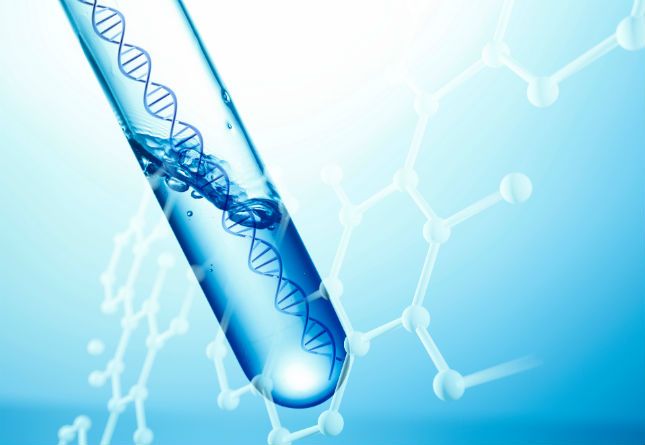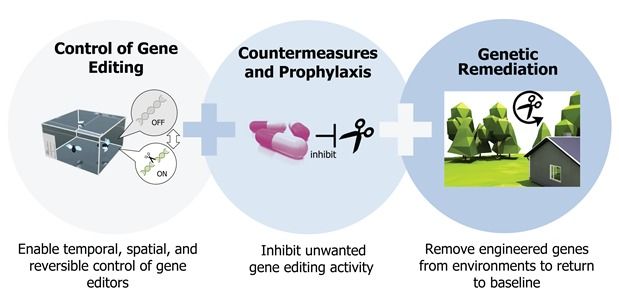Archive for the ‘bioengineering’ category: Page 198
Sep 19, 2016
Researchers address the importance of measurement in synthetic biology
Posted by Karen Hurst in categories: bioengineering, biological, government, sustainability
Dr Michael Adeogun and Dr Max Ryadnov from the National Physical Laboratory (NPL) have written an expert view for Bio-Based World News on the importance of measurement science in synthetic biology, highlighting the vital work that NPL has already undertaken in this field.
Synthetic biology is a growing field which seeks to develop solutions to major global challenges, such as the generation of sustainable and affordable materials and chemicals, and the use of bio-engineered organisms as products. The UK aims to achieve a £10bn market in synthetic biology by 2030.
Since the publication of the government-commissioned Synthetic Biology Roadmap in 2012, the UK has become the second largest investor in synthetic biology, having developed a national network of research centres, doctoral training programmes and knowledge facilities to drive growth in the commercial sector.
Sep 19, 2016
How Fungus And Synthetic Biology Could Save Astronauts On Mars
Posted by Karen Hurst in categories: bioengineering, biotech/medical, food, space travel
Clay Wang brought his kids to the California Space Center a few years ago to show them the Space Shuttle. But as he looked up at Endeavour and pondered human space exploration, the pharmacologist wondered, “What if a crew runs out of medicine halfway to Mars?”
A lot of things can go wrong during a three-year mission to Mars, and there’s only so much medicine you can pack. “For food you can predict exactly how much the astronauts will need to eat,” says Wang. “Medicine you can’t predict.”
What if they develop a sudden need for a drug that wasn’t packed? Compounding the problem is the fact that the space environment seems to make many drugs lose potency and degrade more quickly compared to drugs on Earth.
Sep 19, 2016
CRISPR Could Usher in a New Era of Delicious GMO Foods
Posted by Dan Kummer in categories: bioengineering, biotech/medical, food, genetics
That brought a lot of media attention, and Giorgio got skittish. “They didn’t want to have the perception from customers that their company was developing genetically modified organisms,” says Yang. Yang is still working to perfect the anti-browning in his academic lab, but he has no immediate plans to commercialize it.
The anti-browning trait might also just be a tough sell to customers: When a Canadian apple wanted to sell a GM apple that doesn’t brown—genetically altered through conventional means—it had to battle assumptions that growers just wanted to hide bruised produce. Which is, well, true. Produce that doesn’t brown when handled does also mean less waste for stores and growers.
In Sweden, Jansson is no stranger to unease over genetic engineering. His colleagues recently returned from a conference where activists flung cow dung and eggs at scientists. The CRISPR-edited cabbage he grew he actually got from researchers outside Sweden, who did not want their names or even their country revealed, fearing backlash from environmental activists. Jansson did his cabbage stunt because he wanted people to start thinking about what CRISPR could mean for food.
Continue reading “CRISPR Could Usher in a New Era of Delicious GMO Foods” »
Sep 15, 2016
Is it already too late to consider the ethics of mind control technology?
Posted by Karen Hurst in categories: bioengineering, biotech/medical, ethics, neuroscience
Very true points that many have been raising with CRISPR, Synthetic Biology, BMI, and humanoid technology. I am glad to see this article on ethics and standards because it really needs to be discussed and implemented.
New brain technologies will increasingly have the potential to alter how someone thinks, feels, behaves and even perceives themselves.
Continue reading “Is it already too late to consider the ethics of mind control technology?” »
Sep 15, 2016
CRISPR: What Does Gene Editing Mean for the Future of Primal Living?
Posted by Karen Hurst in categories: bioengineering, biotech/medical, genetics
 By now, you’ve no doubt heard of CRISPR, the latest gene-editing tool sweeping research labs across the globe. It was first discovered in certain strains of bacteria, who use it as an important weapon against dangerous viruses. In bacteria, CRISPR identifies a virus that poses a threat, records the virus’ genetic data and imprints it onto RNA molecules. An immune enzyme called Cas9 grabs one of the RNA molecules and goes exploring. When Cas9 encounters a virus that matches the data on the RNA molecule, it latches on and slices the virus in half to prevent it from replicating and posing any threat.
By now, you’ve no doubt heard of CRISPR, the latest gene-editing tool sweeping research labs across the globe. It was first discovered in certain strains of bacteria, who use it as an important weapon against dangerous viruses. In bacteria, CRISPR identifies a virus that poses a threat, records the virus’ genetic data and imprints it onto RNA molecules. An immune enzyme called Cas9 grabs one of the RNA molecules and goes exploring. When Cas9 encounters a virus that matches the data on the RNA molecule, it latches on and slices the virus in half to prevent it from replicating and posing any threat.
Researchers have co-opted the CRISPR/Cas9 mechanism to edit genes. Instead of copying dangerous viral DNA sequences onto the RNA molecules, they can copy over any sequence they want to edit. And instead of Cas9 destroying viruses, it makes precise cuts and removes specific bits of genetic data from the designated sequence. This allows researchers to target and edit specific gene sequences with genetic data of their choosing.
Sep 15, 2016
Programmable Biology Has Begun
Posted by Karen Hurst in categories: bioengineering, biotech/medical, genetics, life extension, singularity
Scientists have completed reprogramming DNA on the largest scale ever, making the concept of superhumans a reality while advancing Singularity.
Cloned embryo.
Most of us like the idea of superpowers. Though we may never have the strength of Superman, we could be made stronger, faster, and even better-looking, with total control over our genome, or genetic makeup. What about becoming disease-resistant, weight gain resistant, and even slowing down the aging process? This might be possible in decades to come, as geneticists are now getting ever closer to, not just removing and replacing genes, but rewriting entire genomes. It sounds like the realm of science fiction. Yet, consider that geneticists at Harvard recently recoded the genome of a synthetic E. coli bacteria. Prof. George Church and colleagues conducted the study.
Sep 12, 2016
First multicellular organism inspires the design of better cancer drugs
Posted by Karen Hurst in categories: bioengineering, biotech/medical, evolution, information science
Amazing — fighting cancer with a new drug that self-assembles from individual cells that interact with each other into a complex structure through weak supramolecular interactions.
The first multicellular organism, Volvox, evolved from self-assembly of individual cells. Inspired by this organism, researchers from Brigham and Women’s Hospital have developed a novel approach for treating cancer. Drawing from the lessons of evolution, they designed anti-cancer molecules that can self-assemble with each other into a complex structure through weak supramolecular interactions. The complex, supramolecular therapeutics home into the tumor, increasing anticancer efficacy and reducing side effects.
To engineer the supramolecular therapeutics, the researchers developed a first-of-its-kind computational algorithm that simulates how anticancer molecules interact with each other at the molecular and atomic level. This understanding led to the design of the most optimal building blocks that can click with each other like LEGO blocks to form the supramolecular therapeutic. The researchers have named this computational algorithm Volvox after the biological organism.
Ashish Kulkarni, PhD, an instructor in the Division of Engineering in the Department of Medicine at the Brigham and Women’s Hospital, and the lead author of the paper published in September issue of ACS Nano, said, “The algorithm saves a lot of time during the development of next generation cancer therapy. Before we even go into experimental analysis, we are able to see whether or not there is a high enough concentration of the drug for the treatment to be effective. We hope that our method can eventually be used to treat many different types of cancer.”
Sep 12, 2016
Setting a Safe Course for Gene Editing Research
Posted by Karen Hurst in categories: bioengineering, biotech/medical, genetics, military
This is actually pretty significant to see from DARPA; however, not a total shock given the importance of Synthetic Biology and various parties in the military understanding how CRISPR can be used as a weapon.
A new DARPA program could help unlock the potential of advanced gene editing technologies by developing a set of tools to address potential risks of this rapidly advancing field. The Safe Genes program envisions addressing key safety gaps by using those tools to restrict or reverse the propagation of engineered genetic constructs.
“Gene editing holds incredible promise to advance the biological sciences, but right now responsible actors are constrained by the number of unknowns and a lack of controls,” said Renee Wegrzyn, DARPA program manager. “DARPA wants to develop controls for gene editing and derivative technologies to support responsible research and defend against irresponsible actors who might intentionally or accidentally release modified organisms.”
Continue reading “Setting a Safe Course for Gene Editing Research” »
Sep 12, 2016
DARPA working on safe Gene Editing Research
Posted by Klaus Baldauf in categories: bioengineering, biotech/medical, genetics
The Safe Genes program could help unlock the potential of advanced gene editing technologies by developing a set of tools to address potential risks of this rapidly advancing field. The Safe Genes program envisions addressing key safety gaps by using those tools to restrict or reverse the propagation of engineered genetic constructs.
“Gene editing holds incredible promise to advance the biological sciences, but right now responsible actors are constrained by the number of unknowns and a lack of controls,” said Renee Wegrzyn, DARPA program manager. “DARPA wants to develop controls for gene editing and derivative technologies to support responsible research and defend against irresponsible actors who might intentionally or accidentally release modified organisms.”
Continue reading “DARPA working on safe Gene Editing Research” »














